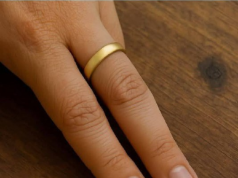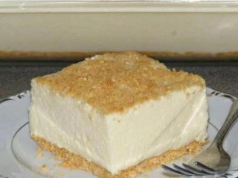A recently resurfaced photograph of a wide-eyed, golden-haired toddler has sparked a storm of reactions across social media—not for its innocence, but for its subject: Donald J. Trump, then a 4-year-old boy with a mop of curls and an expression of quiet curiosity. The image, taken in the mid-1950s in Queens, New York, captures a fleeting moment of softness before the boy became a global lightning rod. Today, that child’s face is etched into the collective consciousness, his name synonymous with division, ambition, and an unyielding presence in politics.
The photo’s virality has become a Rorschach test for public sentiment. For some, it evokes nostalgia for a simpler time, a reminder that even the most divisive figures once embodied the universal vulnerability of childhood. For others, it reignites fury, a symbol of how innocence can curdle into infamy. Comments under the post ranged from “He looked so pure back then—what happened?” to “Even as a kid, he had that look .” Yet beyond the clickbait debates lies a deeper question: How do the seeds of a leader’s identity take root in the soil of early life?
A Childhood of Discipline and Expectations
Donald Trump’s upbringing in the shadow of his father, Fred Trump, a wealthy real estate developer known for his gruff demeanor and relentless work ethic, set the stage for his future persona. Fred’s philosophy—rooted in dominance, competitiveness, and emotional restraint—was as much a curriculum as it was a parenting style. Young Donald learned early that success was measured in trophies and transactions, not tenderness. Family lore tells of Fred storming into Donald’s school at age 8 to demand he be sent to military school, fearing his son’s “softness” would undermine his potential.
At 13, Donald enrolled at the New York Military Academy (NYMA), a boarding school where structure and discipline reigned. The institution’s rigid hierarchy became his crucible. Cadets rose at dawn, marched in formation, and studied under the watchful eyes of instructors trained to forge leaders through harsh rhetoric and physical rigor. Trump later credited NYMA with giving him “tremendous confidence” and a taste for authority, but classmates recalled a boy who thrived in competition, often clashing with peers while seeking approval from superiors. One instructor famously noted, “Donald wasn’t the tallest, but he made sure to stand in front.”
From Cadet to Commander-in-Chief
The military school’s influence lingered. Trump’s speeches, peppered with phrases like “winning” and “toughness,” echo the cadence of drill sergeants. His leadership style—marked by a preference for loyalty, a disdain for dissent, and an obsession with hierarchy—reflects the values instilled in him during those formative years. Even his signature posture, arms stiff at his sides in a rigid stance, has been likened to a cadet’s salute to authority.
Yet Trump’s journey from Queens to the White House was far from linear. His adult life has been a tapestry of contradictions: a self-proclaimed “outsider” who leveraged inherited wealth, a populist who lived in a gilded penthouse, a man who craved adoration while courting controversy. Analysts have long dissected his persona, with some attributing his combative approach to the emotional distance of his youth. “His father’s mantra was ‘You’re only as good as what you build,’” says Dr. Emily Hart, a cultural historian. “That mindset doesn’t leave room for nuance—it leaves room for walls.”
The Polarizing Figure Emerges
By the time Trump entered the national spotlight in the 1980s, his identity was already crystallizing: a brash, deal-making tycoon who saw life as a zero-sum game. His 2016 presidential campaign amplified that persona into a cultural earthquake, drawing fervent support from those who viewed him as a disruptor of elite institutions, and fierce opposition from those who saw him as a threat to democratic norms.
The viral toddler photo has become a microcosm of this divide. To supporters, it’s a reminder of his relatable origins—a child who grew up to “beat the system” and restore American pride. To critics, it’s a chilling juxtaposition: the cherubic face of a boy who would grow up to champion policies and rhetoric that deepened societal fractures.
Legacy in the Rearview
Trump’s post-presidency continues to defy predictability. Legal battles, a third presidential bid, and a media empire built on grievance and grievance-mongering keep him at the center of global discourse. Yet the photo’s resurgence invites reflection on the paradox of his life: How does a child’s world of possibility narrow into a man’s reality of absolutes?
Psychologists caution against reducing complex figures to childhood snapshots, but patterns often emerge. “Early exposure to hyper-competitive environments can shape a person’s view of the world as a battlefield,” explains Dr. Raj Patel, a child development expert. “But it’s not destiny—it’s context.” Trump’s story, then, is one of context colliding with choice, of a boy molded by dominance who chose to wield that legacy on history’s grandest stage.
As the image circulates, it lingers as a silent prompt: What do we see in the face of that boy? A harbinger of greatness? A warning of what unchecked ambition might become? Or simply a mirror held to the human condition—the reminder that even the most polarizing figures once knew the world through wide, unguarded eyes.
In the end, the toddler in the photo is not a prophecy, but a puzzle piece in the mosaic of a leader who redefined fame, power, and the weight of a single man’s shadow on the world.










